Birding in Nelapattu Bird Sanctuary
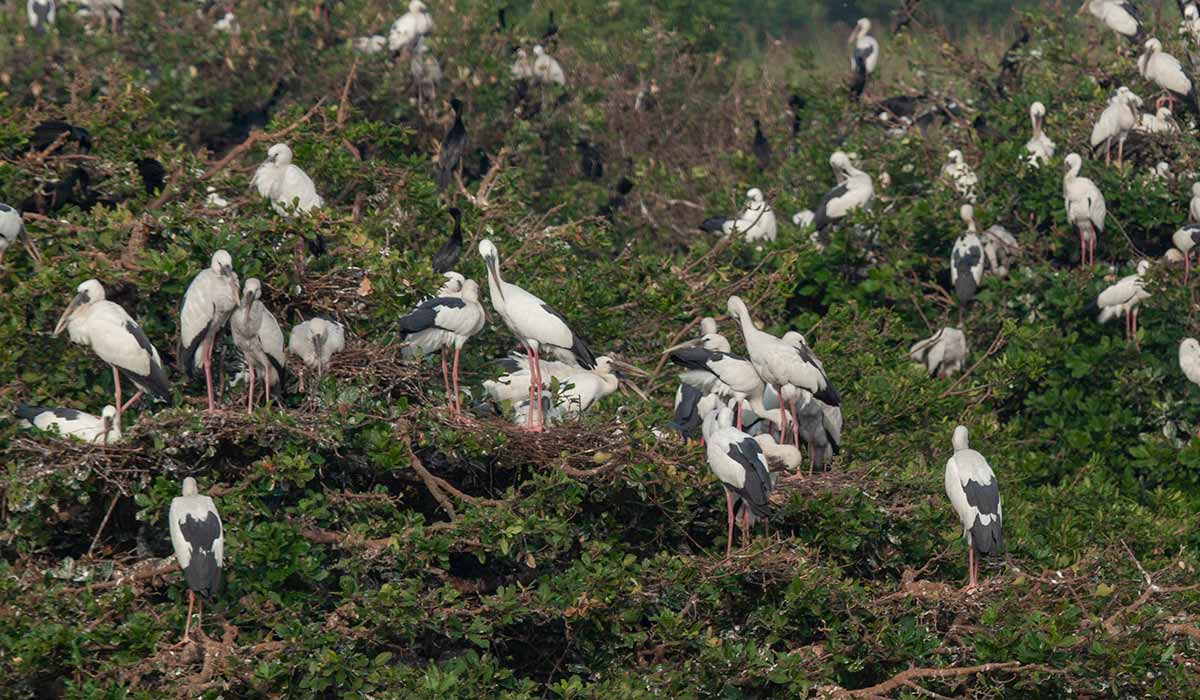
Nelapattu is located at 98 kms from Chennai and the drive takes around 2 hrs usually. We always plan for Nelapattu and then spend the whole day in Pulicat bird sanctuary itself as Pulicat has so much to offer for bird lovers. So we decided to allocate a separate day for Nelapattu instead of combining it with our visit to Pulicat. The bird sanctuaries usually open after 9 AM as the ticket counter has to be opened. As we are morning persons, we always love to enjoy any location at early dawn.
We started from home very early and when the Sun arose, we were at the entrance of Nelapattu Bird Sanctuary. The land surrounding the sanctuary was an unused pasture land. There were plenty of bird activities to occupy us in that beautiful morning.
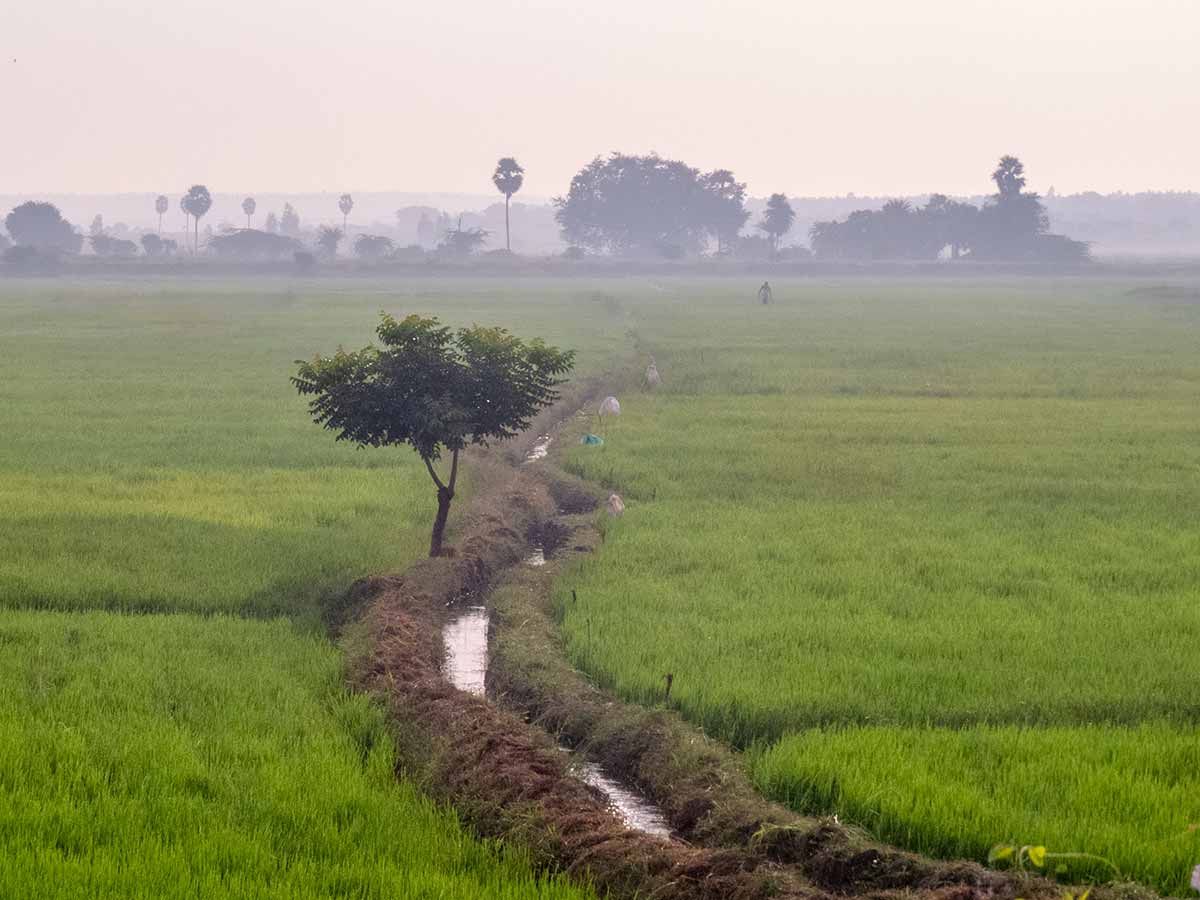
The Booted warbler was hopping around the bushes. The Shrikes were sitting on all the tree stumps and the larks had started their singing. The morning dew on the grasses made the otherwise commonly looking pasture land very scenic. It was too early for butterflies but for awls that was the perfect time. Vinod spotted a Brown awl and was chasing behind him who was a quick flier.
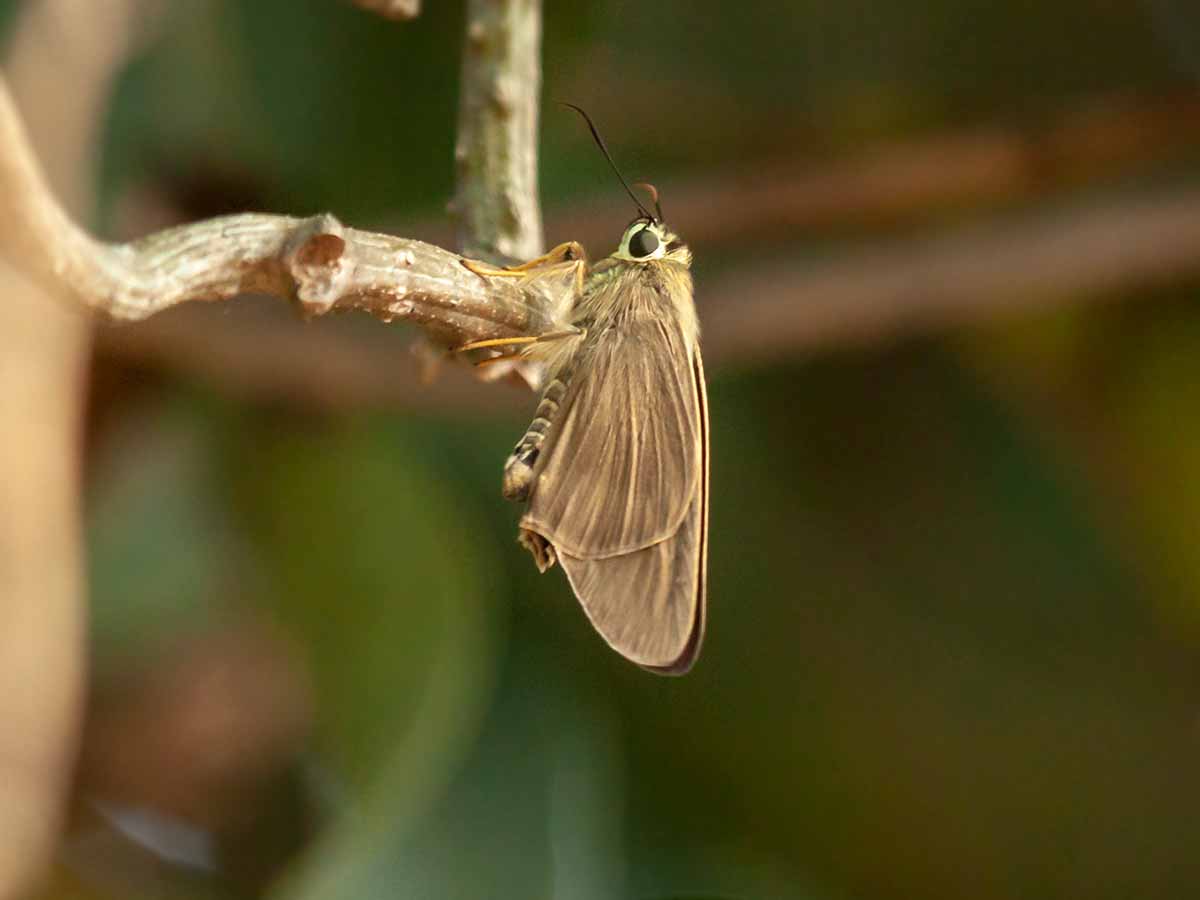
I was looking at the Witchweeds, Dayflowers, Barlerias and Single-petal flowers who covered the ground in blues, pinks,yellows and whites. These are very small wildflowers and you won’t get the feeling of flower carpet unless you look the floor at macro level. My favorite Memecylon umbellatum shrub was also in full bloom which changed the place to blue color.
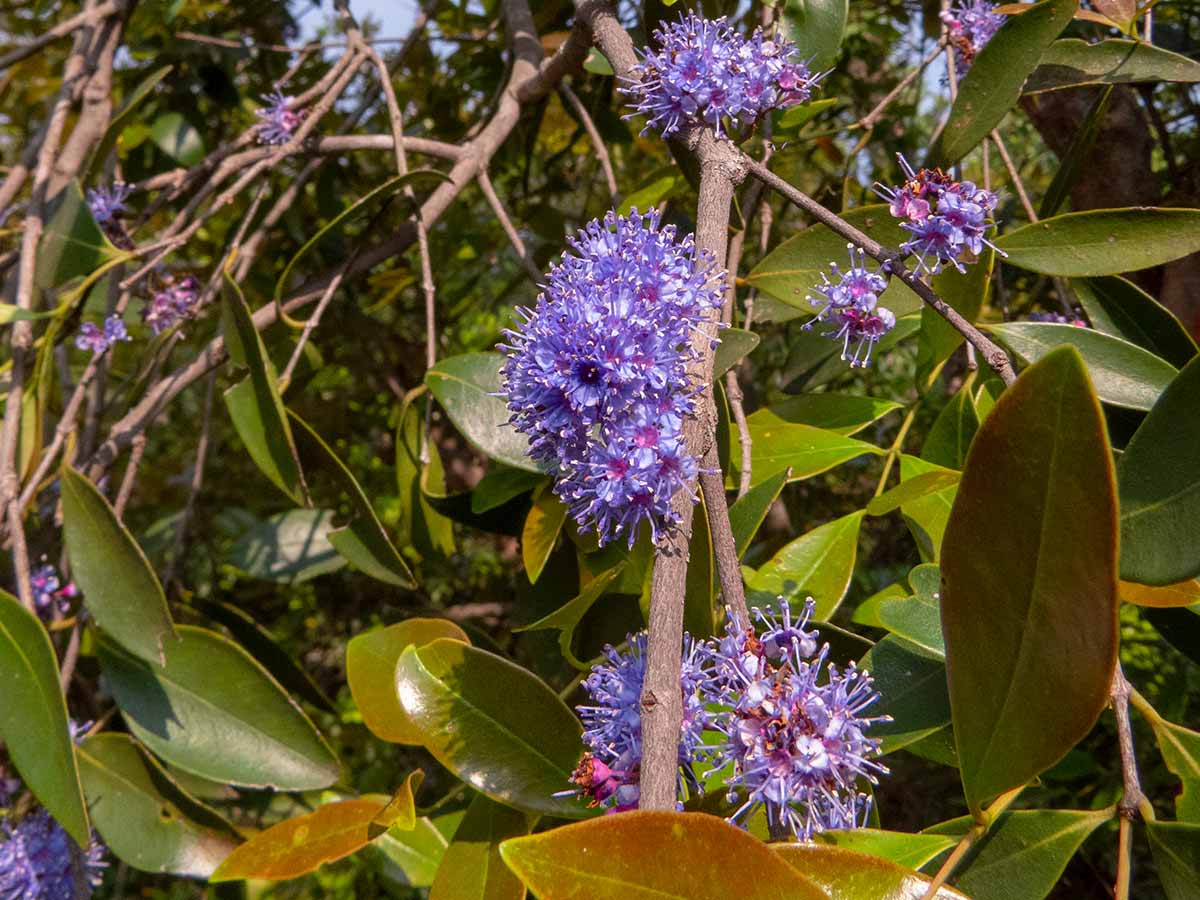
We were hearing water birds sounds from the moment we landed and once we entered the sanctuary, the not so lovely water birds sounds started getting louder. We got the entry tickets and started walking on the pathway. This section is dry belt in Andhra pradesh but with recent rains there was water everywhere. So the water birds had decided to nest and this Nelapattu sanctuary is the best place for nesting. The communal birds are usually noisy as they have lots of gossips to share, so there were ear piercing noises. We had seen Painted Storks, Black-headed ibises nests in Vedanthangal, Koonthakulam bird sanctuaries.
So we were expecting only those birds here also but we were surprised to see the nests of Eurasian Spoonbills and Spot-billed Pelicans. We were also delighted to see the birds in a close but safe distance not like in other sanctuaries where the birds were always very far to have a good observation. I love Spoonbills for their unique beak and they looked attractive with their elongated head feathers on the rear crown. The Roseate spoonbill which we saw in Florida was small compared to this Eurasian Spoonbill.
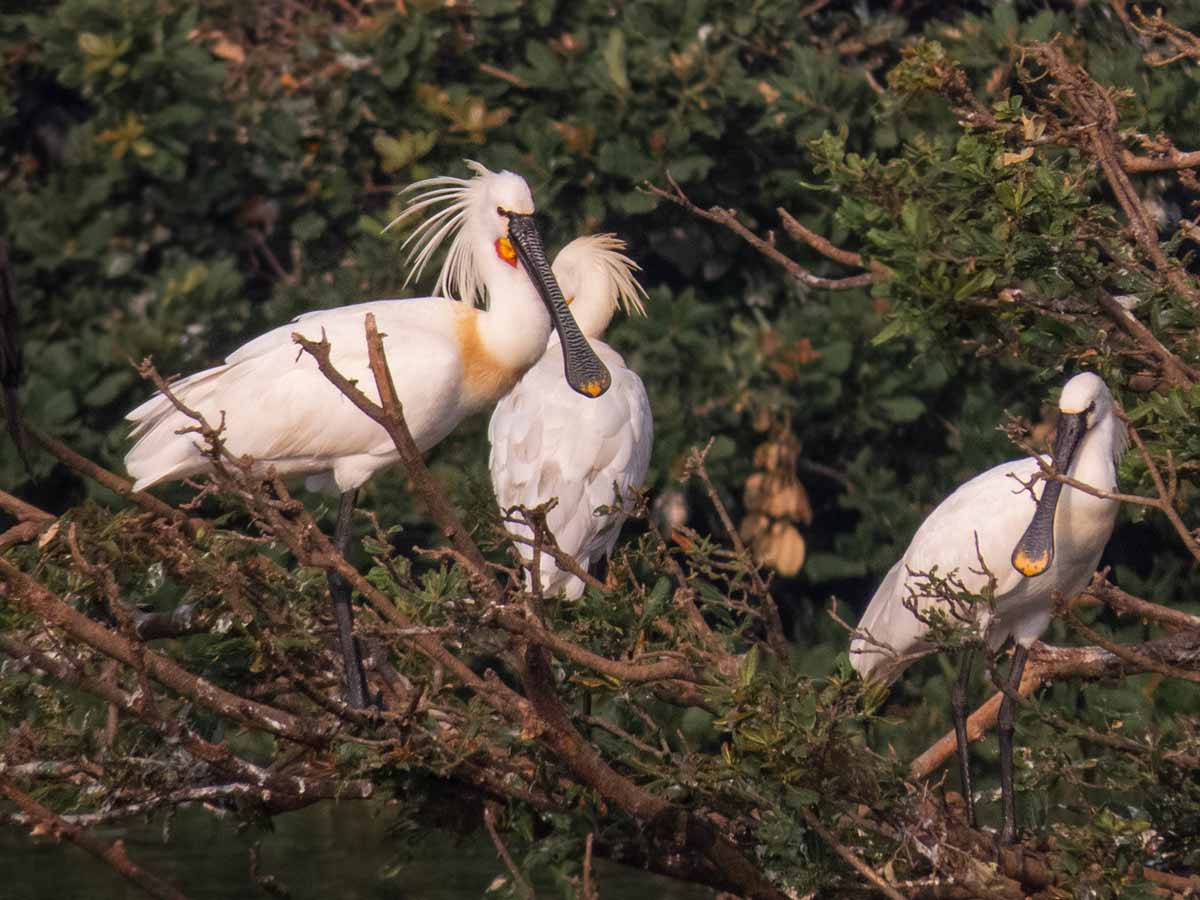
Another amazing bird with big beak is the Spot-billed Pelican, their beak is really a marvel of nature maybe not so marvel for the fishes. We didn’t realize when we visited Nelapattu , the sighting of Pelican nesting was a rare sight. Recently, when we were working on our video on “Pelicans of India” only we came know that the Pelicans were struggling for nesting sites. There are only few sanctuaries in South India that support the nesting of these Spot-billed Pelicans. As they need huge number of fishes which they have to compete with humans, they are facing tremendous dangers. We really thought these big birds are in Safe zone because of their size and bully behavior with other birds. We forgot the fact that they had to deal everyday with the biggest bullies in the world, the humans.
We had a good time in watching the chicks and the new parents.
Nelapattu is one of the last remaining breeding sites for Spot-billed Pelicans.
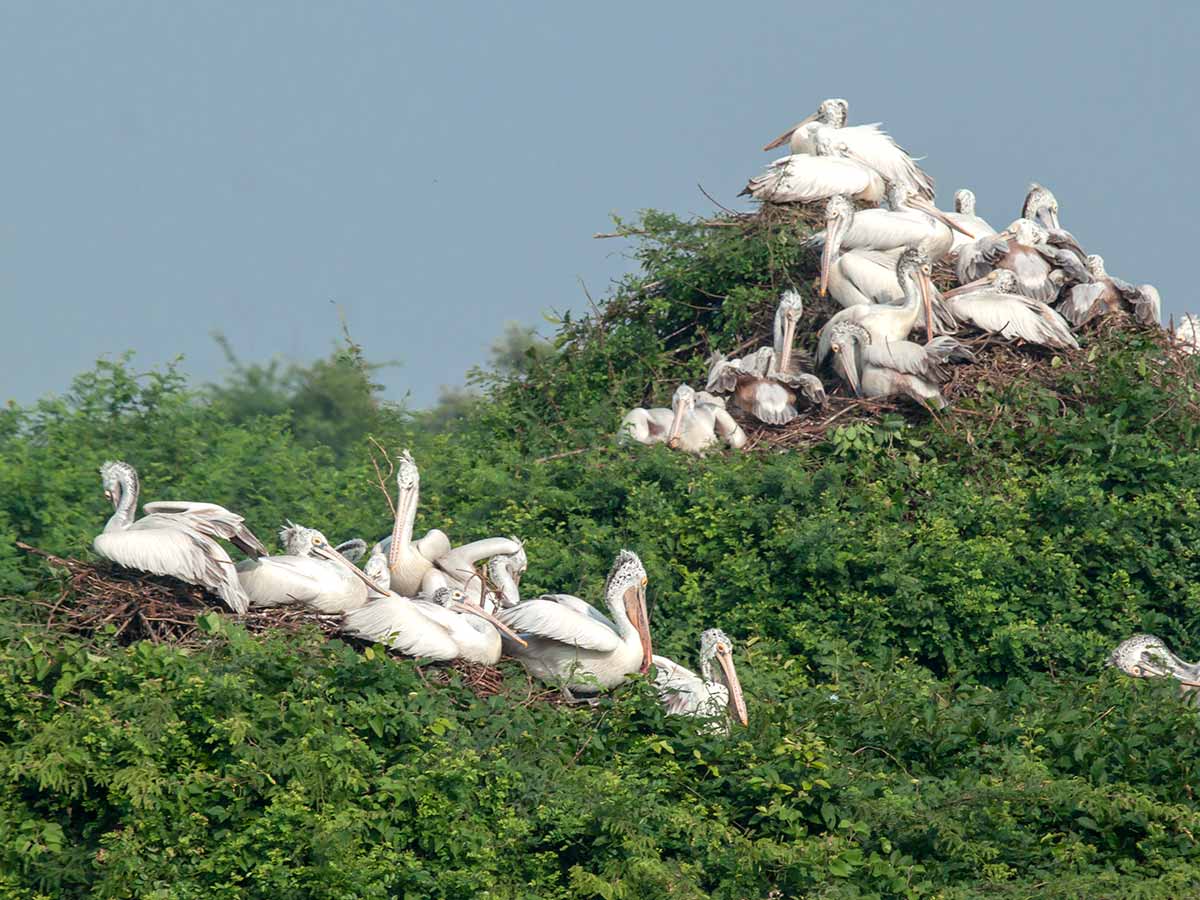
There were Black-headed ibises, Night herons, Asian Openbills and Little Cormorants. Inside the sanctuary there were many Barringtonia acutangula which can grow well in flooded and non-flooded conditions.We had seen them in full bloom in Vedanthangal Bird Sanctuary and they made the floor colorful. We had the sanctuary to ourselves except for few employees and they told there were not many visitors. We guessed that already because there were no tea shops or canteens nearby.In India every corner has a tea shop and I don’t know whether the footfall attracts the tea shop or viceversa. So for us, if there is no tea shop it is a good sign.
We were worried about the Chennai City traffic when we left the sanctuary but we didn’t expect the rural traffic in the next turn. The ding dong bells and the cry of the goats were the only sounds for next few minutes.
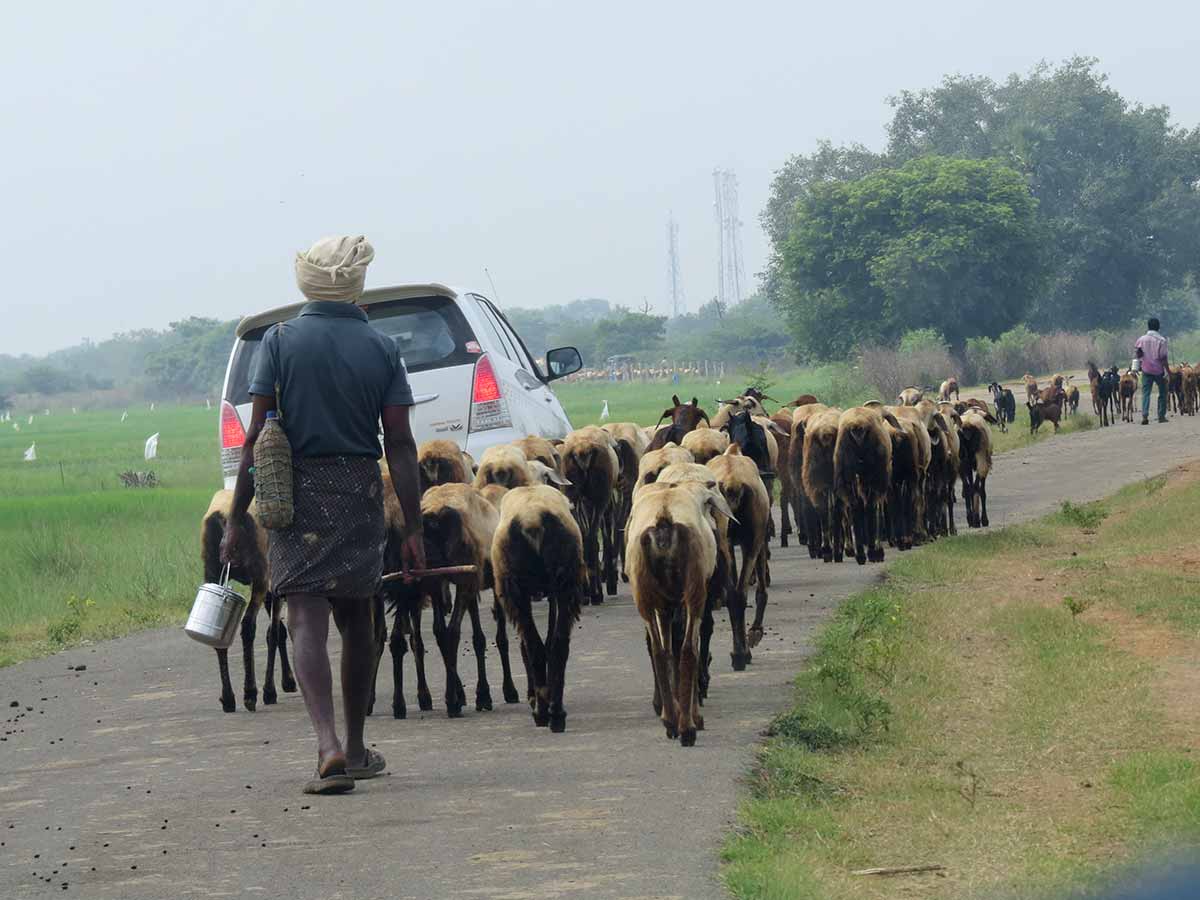
When you are not in a hurry, these are sights to enjoy which can happen only in India. Ducks crossing, cattles lying on the road, dogs jumping,temple elephants walking and cats running are few things you have to worry about while driving in India.
On the way back there was another exciting sighting for me. Crinum viviparum and Pentapetes phoenicea were in full bloom in a swamp nearby. We were seeing the giant crinum lily for the first time. We were thrilled about this wildflower as it was really difficult to see any native aquatic plants as majority of the waterbodies are covered in Water hyacinth.
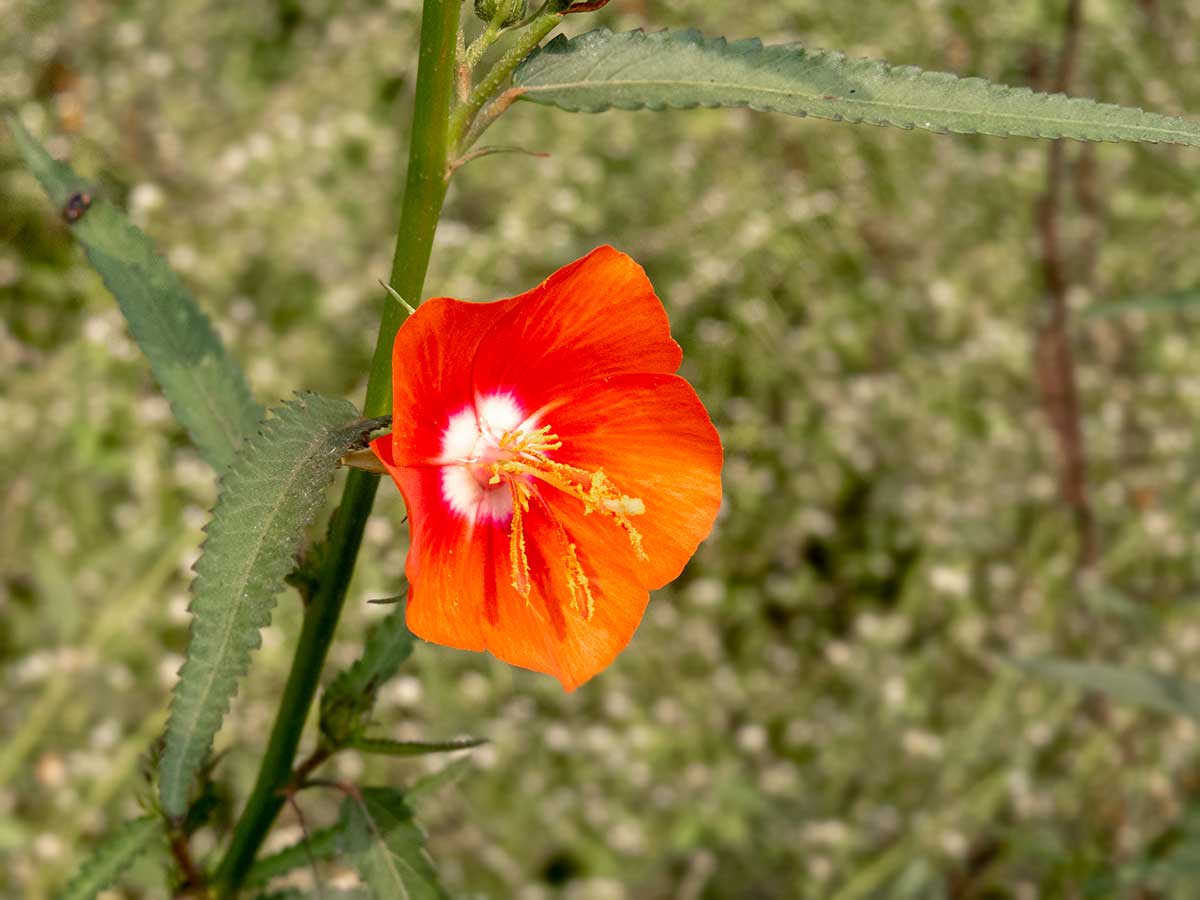
When we visited Nelapattu we didn’t realize the importance of the Sanctuary completely, now we know that the Nelapattu Sanctuary is one of the prominent breeding sites for the Spot-billed Pelican. We hope the Nelapattu Bird Sanctuary will be protected and the birds can continue to raise the young ones safely.